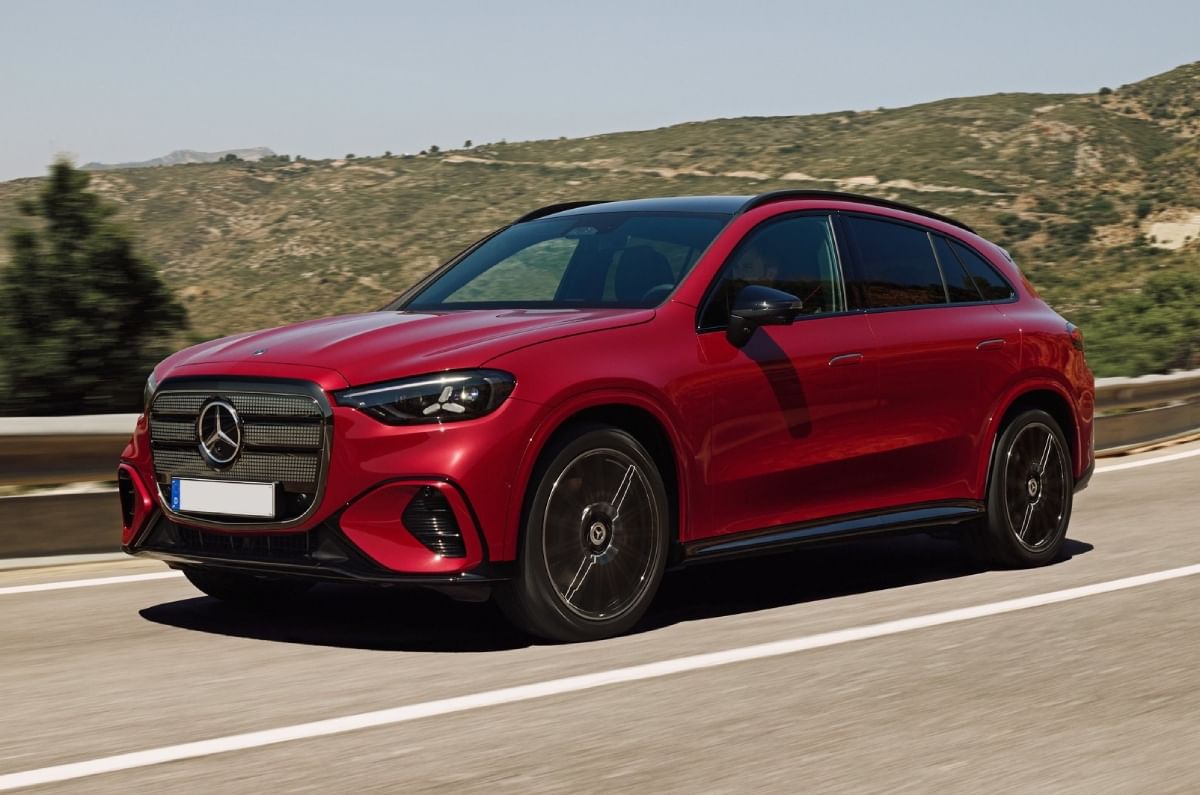
The performance arm of Mercedes-Benz, AMG, has begun work on the sportier version of the all-electric GLC SUV, which will top the model’s range. Expected to be revealed next year, the Mercedes-AMG GLC EV will be among the most powerful models made by the Affalterbach-based brand.
- The AMG version is based on the GLC EV revealed at Munich
- It will be powered by a 3-motor, AWD setup
- AMG GLC EV to use new cylindrical cells instead of prismatic cells
Mercedes AMG GLC EV power and performance
Three axial-flux motors will have a combined output of over 900hp
AMG’s version of the electric SUV is based on the GLC EV revealed at Munich, but its battery and drivetrain will draw heavily on the AMG GT XX, which packs a 144kW battery powering three motors with a combined output of 1,360hp. The AMG GLC EV will also use three axial-flux motors – one on the front axle and two at the rear – with output figures north of 900hp.
For reference, the standard GLC EV gets 374hp RWD and 490hp AWD variants. In fact, the AMG GLC EV’s output figures will likely put it in contention with the range-topping Porsche Cayenne Electric, which has two motors developing over 1,000hp and up to 1,500Nm. AMG is said to be targeting a 0-100kph time of under 3 seconds and an electronically limited top speed of 250kph. Other known technical details include the adoption of a simulated gearshift mode – like the one seen on the Hyundai Ioniq 5 N – and a V8 engine sound simulator.
Mercedes AMG GLC EV battery details
New cooling and thermal battery management systems help increase charging speeds to 400kW
Unlike the standard Mercedes GLC EV, which uses prismatic cells, the AMG version will use new cylindrical cells claimed to offer better power density and thermal characteristics. The 800V battery pack will feature a direct cooling system, where coolant flows around each individual cell to help maintain optimal operating temperatures. Further, the new thermal battery management system not only aids in increasing fast charging capabilities by up to 70kW (to 400kW) but is also essential for sustaining the high discharge rates needed to power the triple-motor setup, allowing for rapid heat dissipation during track use.
The performance arm of Mercedes-Benz, AMG, has begun work on the sportier version of the all-electric GLC SUV, which will top the model’s range. Expected to be revealed next year, the Mercedes-AMG GLC EV will be among the most powerful models made by the Affalterbach-based brand.
- The AMG version is based on the GLC EV revealed at Munich
- It will be powered by a 3-motor, AWD setup
- AMG GLC EV to use new cylindrical cells instead of prismatic cells
Mercedes AMG GLC EV power and performance
Three axial-flux motors will have a combined output of over 900hp
AMG’s version of the electric SUV is based on the GLC EV revealed at Munich, but its battery and drivetrain will draw heavily on the AMG GT XX, which packs a 144kW battery powering three motors with a combined output of 1,360hp. The AMG GLC EV will also use three axial-flux motors – one on the front axle and two at the rear – with output figures north of 900hp.
For reference, the standard GLC EV gets 374hp RWD and 490hp AWD variants. In fact, the AMG GLC EV’s output figures will likely put it in contention with the range-topping Porsche Cayenne Electric, which has two motors developing over 1,000hp and up to 1,500Nm. AMG is said to be targeting a 0-100kph time of under 3 seconds and an electronically limited top speed of 250kph. Other known technical details include the adoption of a simulated gearshift mode – like the one seen on the Hyundai Ioniq 5 N – and a V8 engine sound simulator.
Mercedes AMG GLC EV battery details
New cooling and thermal battery management systems help increase charging speeds to 400kW
Unlike the standard Mercedes GLC EV, which uses prismatic cells, the AMG version will use new cylindrical cells claimed to offer better power density and thermal characteristics. The 800V battery pack will feature a direct cooling system, where coolant flows around each individual cell to help maintain optimal operating temperatures. Further, the new thermal battery management system not only aids in increasing fast charging capabilities by up to 70kW (to 400kW) but is also essential for sustaining the high discharge rates needed to power the triple-motor setup, allowing for rapid heat dissipation during track use.

